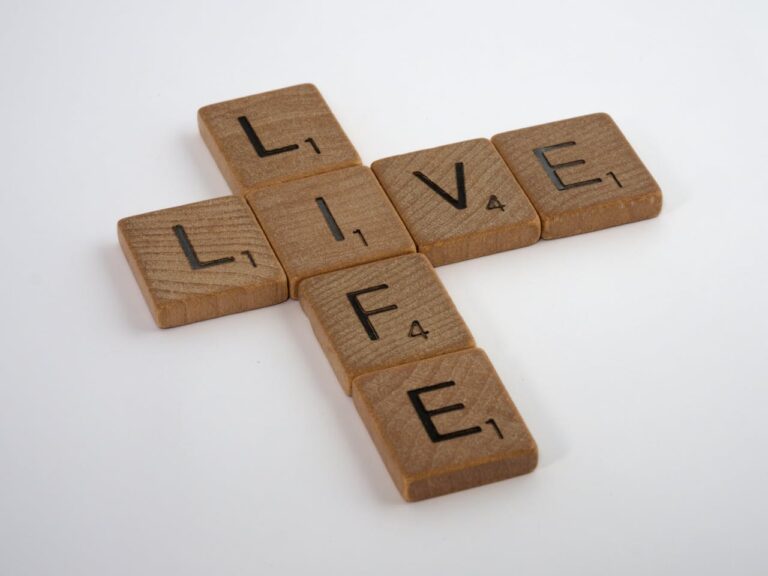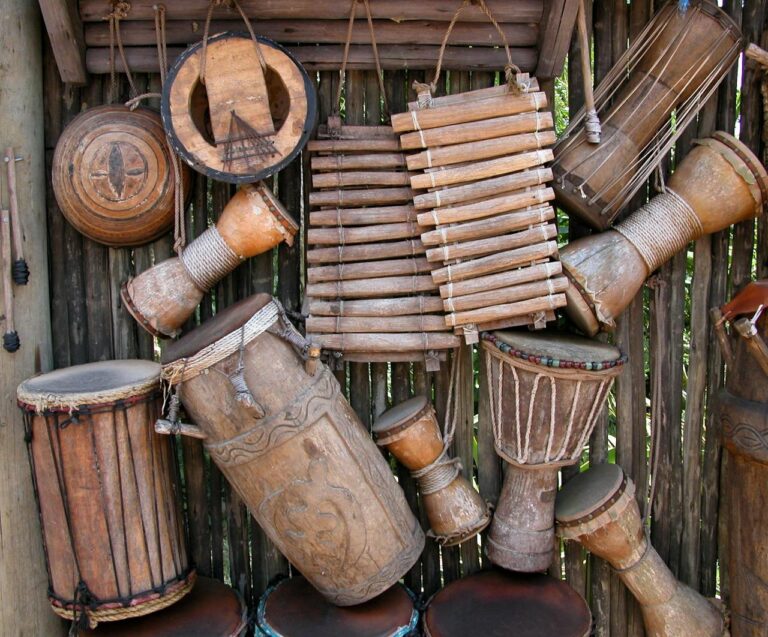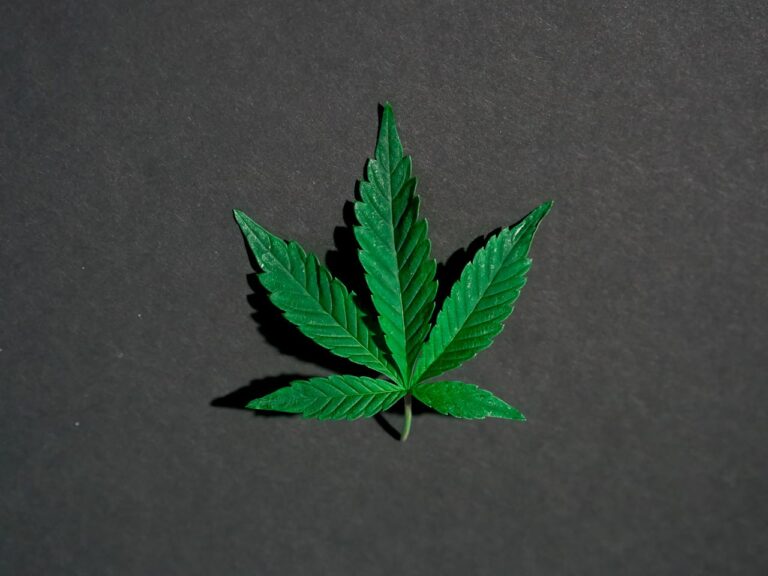Living Livity: The Rastafarian Path to Righteous Living
“Livity is living in oneness with Jah, the earth, and each other.”
In Rastafari, the concept of livity is the center of life itself. It’s not just a belief system — it’s a daily practice. Livity means living righteously, consciously, and naturally, in full awareness of Jah’s presence in every moment. It’s about energy, vibration, and actions that feed the soul, not just the body.
At the root of livity is community. Rastafarians believe that true spiritual growth doesn’t happen in isolation — it happens among people. Sharing food, supporting one another, reasoning (deep conversation), and creating together are all ways of expressing livity. It’s a lifestyle based on cooperation over competition, upliftment over division.
Livity shows up in everything a Rasta does — from eating Ital foods, to speaking positive words, to making music with a purpose. It’s about aligning thoughts, words, and actions with the principles of love, peace, and respect for all life. Every choice, no matter how small, reflects one’s commitment to living in harmony with Jah’s will.
Nature plays a huge role in livity. Many Rastafarians cultivate gardens, live close to the land, and avoid overconsumption. Respect for the earth is seen as respect for life itself. The more naturally you live, the stronger your connection to Jah.
Livity also demands personal responsibility. It’s not enough to preach righteousness — you have to live it. That means showing humility, helping others, avoiding exploitation, and striving for spiritual purity in a world that often pushes the opposite.
In a society built on Babylon’s values — greed, selfishness, materialism — livity is a quiet revolution. It’s choosing to live differently, live consciously, and live close to the truth.
Through livity, Rastafarians keep their culture alive, strengthen their communities, and stay connected to the source of all life.
🌿 Ways to Practice Livity Daily 🌿
- Eat Ital: Nourish the body naturally
- Speak Life: Use positive, conscious language
- Reason: Share wisdom and build unity
- Care for the Earth: Live sustainably and respectfully
- Help Others: Serve community without seeking reward
“Livity is not something you say. It’s something you are.”
How do you bring ‘livity’ into your everyday life? Inspire us with your story!
Rasta Fashion: Colors of Faith, Pride, and Resistance
“Clothing is a message you wear.”
In Rastafarian life, fashion is not just about looking good — it’s about living truth. Every color, every fabric, every piece worn carries a meaning rooted in faith, resistance, and pride. Rasta fashion is a visual proclamation of identity, unity, and spiritual connection.
The colors red, gold, green, and black dominate Rastafarian clothing and accessories. These colors aren’t random. They come from the Ethiopian flag and symbolize key elements of the Rasta worldview:
- Red represents the blood of martyrs and the ongoing struggle for liberation.
- Gold symbolizes the wealth and beauty of Africa.
- Green stands for the fertile lands of Ethiopia and the promise of life.
- Black reflects the strength and resilience of African people.
Dreadlocks, headwraps, knitted tams (hats), and flowing, natural fabrics often complete the Rasta look. Men and women alike use fashion as an extension of Ital living — choosing materials that are natural, loose, and comfortable, respecting both the body and the earth.
Traditional Rasta attire often includes African-inspired prints and handmade garments that connect the wearer back to their ancestral roots. Clothing avoids synthetic materials when possible, aligning with the commitment to natural, Ital living.
Fashion also sends a message to Babylon: “We will not conform.” In a world obsessed with trends, labels, and consumerism, Rasta fashion stays rooted in meaning over materialism. It’s about representing a spiritual and political stance — not chasing style for style’s sake.
Over the years, Rasta fashion has influenced global trends, especially through reggae music’s worldwide popularity. But at its core, it remains a statement of faith and freedom, not a commercial brand.
When a Rastafarian dresses, they’re not just getting ready for the day — they’re declaring who they are, where they come from, and what they stand for.
🧵 Rasta Fashion Essentials 🧵
- Colors: Red, gold, green, black — each with deep meaning
- Dreadlocks and Tams: Symbols of natural living and spiritual power
- Natural Fabrics: Cotton, hemp, linen
- African Prints: Celebration of cultural roots
- Minimalism: Substance over flash; meaning over branding
“Wear your spirit. Let Babylon see who you really are.”
Rocking Rasta colors? Post your style pics or tell us why the colors speak to you.
How to Make Ginger Beer
Ginger beer is one of those old-school drinks that still hits hard today. It’s spicy, sweet, a little funky, and refreshingly different from the stuff you grab off a soda shelf. Best of all, real ginger beer is easy to make at home with just a few ingredients and some patience. Here’s everything you need to know.
First, clear this up: ginger beer isn’t the same as ginger ale. Ginger ale is a mild, carbonated soft drink. Ginger beer is deeper — fermented, spicier, and slightly alcoholic (though you can control that). It’s been around since the 1700s, originally brewed in England. Back then, it packed a punch. Today, homemade versions can be as bold or as light as you want.
Here’s a quick printable ginger beer recipe — clean and straight to the point:
Homemade Ginger Beer Recipe
Ingredients:
- 4–6 inch piece fresh ginger (2–3 tbsp grated)
- 1 cup sugar (white or raw)
- 1 lemon (juiced)
- 1/4 teaspoon active dry yeast
- 5 cups water
Instructions:
- Prepare Ginger: Peel and finely grate the ginger.
- Make Syrup: In a pot, bring 2 cups of water to a boil. Stir in sugar and grated ginger. Turn off heat. Add lemon juice. Let cool to room temperature.
- Add Yeast: Once cool (under 100°F/38°C), stir in yeast.
- Bottle It: Pour into a clean 2-liter plastic bottle. Add 3 more cups water, leaving 1 inch of space. Seal tightly.
- Ferment: Leave at room temperature for 24–48 hours. When the bottle feels firm, it’s ready.
- Refrigerate: Chill to stop fermentation. Open slowly. Strain if desired. Serve cold.
Tips:
- Check pressure by squeezing the bottle.
- Shorter fermentation = less alcohol.
- For extra flavor, add cinnamon or cloves to the syrup.
Zion Calling: Rastafari’s Vision of Africa and Homecoming
Africa (Zion) and the Repatriation Dream
“Home is not just a place. It’s a destiny.”
For Rastafarians, Africa — and more specifically Ethiopia — is more than just a continent. It’s Zion, the promised land, the spiritual and ancestral home of all African descendants scattered across the globe. In contrast, the Western world, built on slavery and colonialism, is seen as Babylon — a system of corruption, oppression, and spiritual death.
The call for repatriation — returning to Africa, whether physically or spiritually — is a major pillar of Rastafari faith. This dream is rooted in Marcus Garvey’s teachings in the early 20th century, when he urged Africans in the diaspora to “look to Africa” for redemption and leadership. Garvey’s philosophy laid the foundation for Rastafarians to see Africa not as a faraway land, but as their rightful home and future.
Ethiopia holds a particularly special place. Rastafarians believe Emperor Haile Selassie I — crowned in 1930 — is the fulfillment of biblical prophecy and the earthly representation of Jah. His leadership symbolized African sovereignty and pride at a time when the continent was largely colonized. Ethiopia’s history of resisting European domination made it the perfect symbol of freedom and resilience.
For some Rastas, repatriation is a literal goal — moving to Africa to build communities and reconnect physically with the land. For others, it’s a spiritual repatriation — living by African values, embracing African identity, and rejecting Babylon’s mental and cultural chains without needing to move geographically.
Today, while mass physical repatriation has not occurred on a large scale, the dream remains alive. Through music, faith, and lifestyle, Rastafarians around the world continue to “return” to Africa every day — in mind, in heart, and in spirit.
To know Africa is to know yourself. And for Rastafari, that knowledge is the beginning of true freedom.
🌍 Africa and Zion in Rastafari Belief 🌍
- Ethiopia: Spiritual center and symbol of sovereignty
- Marcus Garvey: Prophet who planted the seed of repatriation
- Zion: Homeland of peace, pride, and divine connection
- Babylon: System of oppression to be escaped and rejected
- Repatriation: Physical or spiritual return to African roots
“Africa is not behind us — it is ahead of us, calling us home.”
What does ‘home’ mean to you? Share your vision of Zion with us
Roots Reggae: Soundtrack of Rastafari and Revolution
Roots reggae isn’t just music — it’s a movement. Born in the struggles of 1970s Jamaica, roots reggae carried the heartbeat of Rastafari across the world. It gave voice to the voiceless, put liberation into lyrics, and made spiritual resistance something you could dance to and think about at the same time.
Deeply influenced by Rastafarian philosophy, roots reggae speaks about social justice, African identity, repatriation, faith in Jah, and the fight against Babylon (the corrupt, oppressive system). The slow, heavy bass lines, steady drumbeats, and rich harmonies create a trance-like rhythm that invites listeners to reflect and awaken, not just move their feet.
Artists like Bob Marley, Peter Tosh, Burning Spear, and Culture used roots reggae as a weapon of truth. Their songs weren’t made just for radio play — they were spiritual messages disguised as music. Tracks like “Get Up, Stand Up,” “Jah Nuh Dead,” and “Marcus Garvey” taught history, demanded freedom, and offered hope, especially to those crushed under poverty and racism.
Roots reggae is inseparable from the Rastafarian spirit of “livity” — righteous living, community upliftment, and constant spiritual awareness. Lyrics often refer directly to Jah, the Bible, the suffering of African people, and the call for global unity under a higher law.
Even today, the echoes of roots reggae ripple through hip-hop, world music, and modern reggae fusion. Its impact on political movements, social activism, and Black consciousness is undeniable. Whenever you hear an anthem for freedom or a song about fighting the system with love and truth, you’re hearing the legacy of roots reggae in action.
Roots reggae isn’t about escaping reality — it’s about facing it head-on, armed with rhythm, reason, and righteous rebellion.
🎶 Pillars of Roots Reggae 🎶
- Bob Marley: Voice of global unity and African pride
- Peter Tosh: Warrior for equal rights and justice
- Burning Spear: Keeper of history and African consciousness
- Culture (Joseph Hill): Spiritual messenger of love and wisdom
- Steel Pulse: Voice of the diaspora and political resistance
“When roots reggae plays, the soul remembers what it’s fighting for.”
What’s your all-time favorite roots reggae anthem? Drop your top tracks below!
Speaking Rastafari: Language of Liberation and Life
“Words carry life, so speak with life.”
In Rastafari culture, language isn’t just communication — it’s a tool for spiritual empowerment and resistance. Rastafarian speech, often called “Iyaric,” transforms everyday English into a positive, life-affirming, and conscious way of speaking. Through these changes, Rastas reshape reality itself, using words to reflect the divine truth they live by.
One of the core concepts is the replacement of “me,” “we,” or “you” with “I and I.” This simple yet profound phrase means that all people are connected through Jah, recognizing no separation between the individual and the divine. It’s a daily reminder that unity with others and with God is essential.
Rastas also rework common words to break away from negativity or colonial influence. For example:
- “Understand” becomes “overstand,” suggesting a position of strength and clarity, rather than being “under” something.
- “Dedicate” becomes “livicate,” infusing actions with the energy of life rather than death.
- “Oppression” becomes “downpression,” flipping the focus to the true source of hardship.
These shifts aren’t random — they reflect a deliberate effort to use language as a force for spiritual upliftment and mental liberation. Speaking in Iyaric trains the mind to think positively, reject Babylon (the oppressive system), and stay aligned with livity — righteous, natural living.
Beyond vocabulary, the tone and intent behind words matter deeply. Speaking truthfully, kindly, and consciously is a core practice. Language is treated as a living power — something that can heal or harm, build or destroy.
Today, Rasta speech influences reggae music, global culture, and even street slang in places far from Jamaica. But at its root, it remains a sacred practice — a daily act of reclaiming dignity, truth, and connection through every word spoken.
🗣️ Key Words in Rastafarian Speech 🗣️
- “I and I” – Unity of self and Jah; connection among all people
- “Overstand” – Deep, clear understanding from a place of strength
- “Livicate” – Devote something in the spirit of life
- “Downpression” – Systems and forces that suppress people
- “Livity” – Living in harmony with Jah and nature
“Speak livity, live livity — words are the seeds of reality.”
Nyabinghi: The Drums, The Chants, The Spirit of Rastafari
“Beat the drums, chant the psalms — free the soul.”
At the heart of Rastafarian spirituality lies the Nyabinghi ceremony — a powerful gathering of prayer, drumming, chanting, and reasoning. Named after an East African queen who fought colonial rule, Nyabinghi embodies the spirit of resistance, liberation, and unity that defines Rastafari life.
Nyabinghi ceremonies are often held to mark important dates in Rastafarian history, honor great leaders, or simply strengthen communal bonds. These gatherings can last for hours, sometimes even days, blending ritual with spontaneous celebration. They are not shows for entertainment — they are sacred services of deep spiritual importance.
The heartbeat of Nyabinghi is the drum. Three main drums — the bass, fundeh, and repeater — drive the rhythm, each carrying its own spiritual message. The bass drum lays the foundation like a steady heart, the fundeh maintains the middle beat, and the repeater improvises freely, soaring into ecstatic calls. Together, they create a sonic landscape that mirrors the natural rhythms of life itself.
Alongside the drums, participants chant sacred songs, many drawn directly from biblical psalms or adapted from African spirituals. The chants often call for repatriation to Africa, deliverance from oppression, and praise to Jah. The sound of dozens of voices rising and falling in unison, carried by the heartbeat of the drums, transforms the atmosphere into something otherworldly — a direct channel to the divine.
During Nyabinghi, ganja may be used ceremonially to deepen meditation and spiritual connection. Reasoning sessions also unfold, where participants share wisdom, scripture, and visions for the community’s future. The entire gathering is a blend of body, spirit, and mind moving together toward collective upliftment.
Through Nyabinghi, Rastafarians keep their faith alive, passing it from generation to generation in rhythm, word, and fire.
🥁 Elements of a Nyabinghi Ceremony 🥁
- The Drums: Bass, fundeh, and repeater in sacred harmony
- Chanting: Psalms, spiritual songs, and liberation anthems
- Reasoning: Sharing wisdom, scripture, and visions
- Sacred Fire: Burning to symbolize purity and Jah’s presence
- Community Circle: Open to all who come in peace and respect
“The drum is the voice of the ancestors. The chant is the cry of the soul.”
Ever felt the power of live Nyabinghi drumming? Share your experience!
Ganja in Rastafari: Sacred Plant, not a Party Drug
“The herb is the healing of the nation.”
In Rastafarian belief, ganja (cannabis) is not a recreational drug — it’s a sacred plant. Used in spiritual ceremonies, personal meditation, and communal reasoning sessions, ganja is a tool to heighten consciousness and connect more deeply with Jah (God).
Rastas trace the sacred use of ganja back to biblical scriptures, such as Psalm 104:14, which speaks of “herb for the service of man.” They see cannabis as a natural gift meant to aid spiritual awakening, cleanse the body, and promote peace of mind. Smoking ganja is often referred to as a form of worship, a way to purify thought, strengthen unity, and break down barriers between individuals and the divine.
During reasoning sessions, small groups of Rastas gather in a circle to discuss spiritual matters, current events, or philosophical ideas, passing the chalice (pipe) or a hand-rolled spliff in a communal ritual. These gatherings are not parties — they are sacred spaces where higher consciousness is pursued and shared. Ganja helps to slow the mind, remove distractions, and open deeper levels of overstanding (understanding from a higher, spiritual place).
Importantly, not all Rastafarians use ganja. While many embrace its sacramental role, others focus on prayer, music, and fasting as their primary spiritual practices. Those who do use it approach ganja with reverence, not as an escape or casual indulgence.
In modern times, the global legalization movement has sometimes blurred the sacred meaning of ganja within Rastafari. Yet for true followers, the herb remains a key part of livity — a holy connection to the earth, to each other, and to the Most High.
🌿 Sacred Uses of Ganja in Rastafari 🌿
- Meditation: Enhancing focus and introspection
- Prayer: Opening the mind to spiritual guidance
- Reasoning Sessions: Facilitating deep communal dialogue
- Healing: Physical and emotional cleansing
- Connection to Nature: Honoring Jah’s natural gifts
Respect the herb? Drop your thoughts on spirituality and ganja below
Why Dreadlocks Matter in Rastafarian Culture
“Locks are a covenant with the Most High.”
In Rastafarian culture, dreadlocks are much more than a hairstyle — they are a profound spiritual commitment and a visible symbol of faith. Inspired by the Nazarite vow in the Bible (Numbers 6:5), Rastafarians grow their hair naturally, without cutting or combing, as a sign of their devotion to Jah (God) and their rejection of “Babylon” — the oppressive systems of the Western world.
The formation of dreadlocks represents a conscious break from societal norms that prize conformity, control, and vanity. Instead, Rastas let nature take its course, allowing their hair to lock and coil organically. Every strand becomes a testament to patience, endurance, and a refusal to bend to external pressures.
Locks also hold deep cultural power. They embody a return to African identity and pride, challenging the colonial mindset that once labeled African features as inferior. For many Rastas, growing dreadlocks is a radical act of self-love and political resistance. It’s a reminder that their roots — both literal and spiritual — are strong and sacred.
Beyond symbolism, dreadlocks carry a personal journey. Each stage of locking reflects different phases of growth: from the messy beginnings (known as the “baby locks” phase) to the long, matured ropes that flow like a lion’s mane. In fact, Rastas often draw comparisons between themselves and lions — a nod to the Lion of Judah, an important symbol in Rastafari representing strength, kingship, and the lineage of Haile Selassie I.
Today, while dreadlocks have been adopted by people from many backgrounds, for Rastafarians, the locks remain sacred. They are not a trend or aesthetic choice — they are a living covenant between the individual and the divine.
🦁 Symbolic Meanings of Dreadlocks 🦁
- Spiritual Strength: Commitment to Jah and righteous living
- African Pride: Celebration of Black identity and heritage
- Resistance: Defiance against Babylon and colonial systems
- Natural Living: Trusting the body and nature to move without interference
- Lion of Judah: Power, royalty, and spiritual authority
“Each lock is a prayer, a promise, and a declaration of freedom.”
Thinking about growing your own locks? Tell us what the journey means to you











